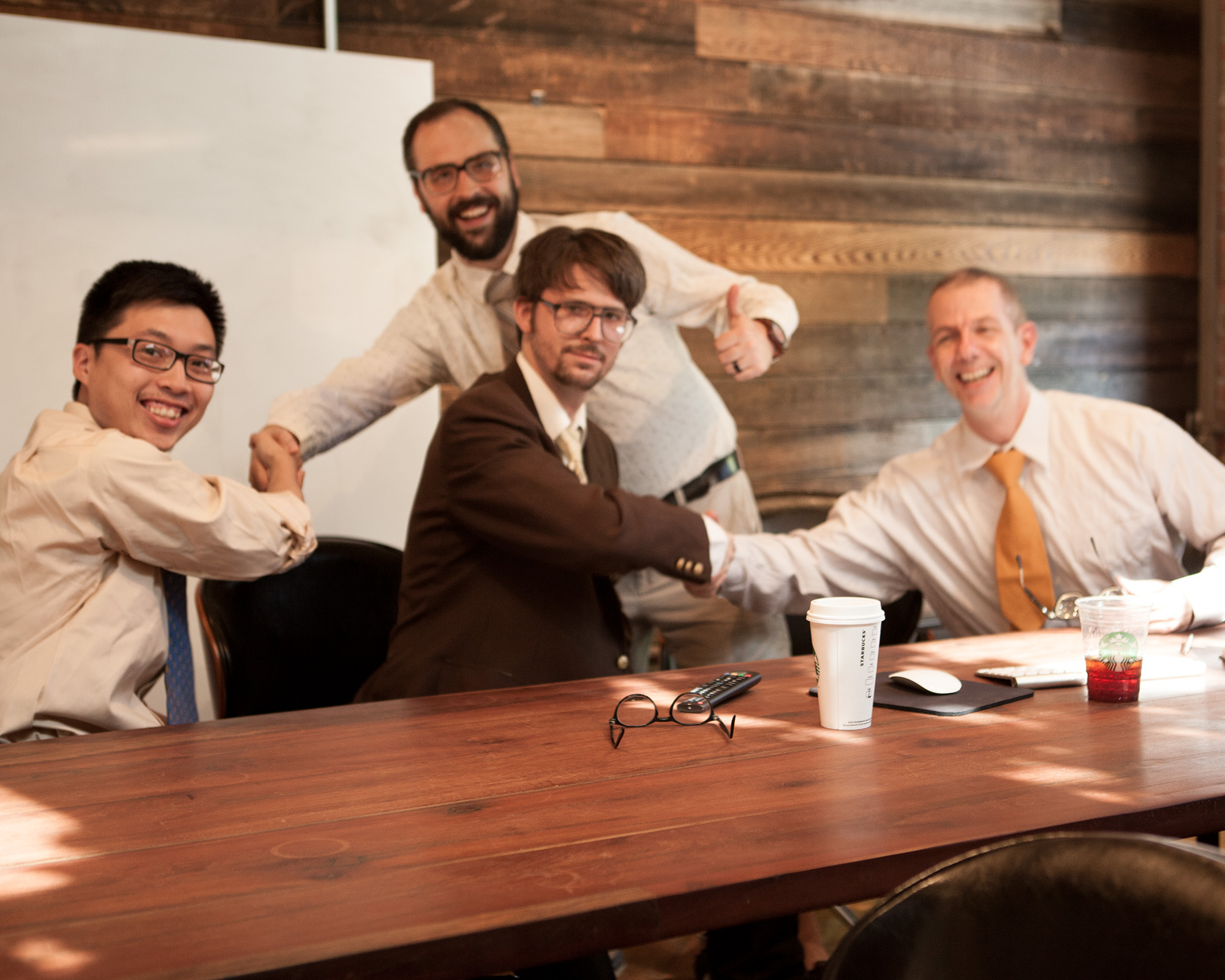You might think that all of us here at Urban Influence are just a bunch creative geniuses with an eye for badass beautiful details.
But underneath all the pretty things we make is a secret superpower: helping clients make big decisions.
When clients are working with a branding agency, it’s usually because they’ve got something that isn’t working for them. Whether it’s an old brand that needs refreshing, or something brand new, they’re bringing in an agency to help them take a big step forward.
But big steps forward are scary. There are so many unknowns, in most cases, building out their brand something a business will only ever do once, maybe twice, so it’s not as though you can be sure you know exactly what to do because you’ve done it before.
Luckily, it is possible to make big decisions, even with a big group of people with widely varying decisions. Here’s how we help people do it at Urban Influence.

Get the conversation going
Sometimes, after presenting a few options for logos or company taglines, we’ll be met with a stunned silence.
It’s no surprise why. Making a decision about your company’s brand is a huge decision; after all, your brand is going to affect everything from your company culture to your annual revenue.
Beyond that, it’s scary to give feedback on other people’s work. People don’t want to look stupid for liking something no one else on their team likes, and it can be uncomfortable to critique the work of a designer who is sitting right there in the meeting with you.
So if there’s a silence in the air, we always try to find ways to get people talking that take the pressure off. Ask people for first, gut reactions, reminding them that these feelings are just as valid as fully formed thoughts and it’s okay if they change over time or with more conversation; this is just a first step of many, and no one needs to have a 100% perfectly right answer yet.
Don’t let people get away with not participating or holding back. The best possible decision will be made when everyone’s perspective has been considered, not just the people who are most keen to speak up. Not everyone needs to give a speech, but it’s valuable to get everyone at the table involved.
Once the ice gets broken for everyone, it’s easier to get a real discussion going. And the discussion is the key next step on the road to a great decision.
Facilitating discussion: questions and notes
As you dig into a branding and design process, you learn that the devil is in the details. While you might have walked in knowing you wanted a brand that was “modern” and “engaging”, you will quickly learn that everything is up for interpretation. What does “modern” mean to you? What does it mean to your coworkers? What does it mean to your customers?
Asking questions helps you get to the heart of the matter, and helps define what you really want and need.
If your team is having trouble coming to agreement, try asking each other questions to help expand and understand each other’s perspectives. While it’s nice to hear yourself talk, it’s more productive to get everyone else talking.
It’s also a good idea to record everyone’s points somewhere, along with any unanswered questions you need to look up later. Writing down the opinions not only validates them by giving them space, but also allows you to visualize them, making it more likely that you’ll see the common themes and consensus.

Reframe the conversation and give guidelines
Groups hit deadlocks when the decisions that need to be made seem too huge for anyone to possibly agree. So instead of asking everyone to agree on a big picture idea, start seeking consensus within some guidelines.
Reframing a conversation can give everyone an opportunity to see the problem more clearly and come at consensus more quickly.
For example, if you’re looking at 4 logo options, try first deciding which ones are definitely not going to work, rather than trying to simply pick a winner. When you have eliminated a few options, it gets easier to compare since there are fewer choices and it’s easier to define their different merits.
It can also be helpful to remind everyone what the goals for the brand or project are. One logo or website design isn’t inherently better than another; it all depends on what you need it to do. Try not to get too caught up in the details, which can always be tweaked or changed. Instead, see if you can zoom out and remember what you were trying to achieve it can help you see the options in a new light.
Sleep on it (but don’t forget about it)
Not every big decision needs to be made right there in the conference room. It’s okay to give people time to step away — just don’t forget to schedule a followup meeting within the following day or two, where the directive is to pick a final choice in that meeting.
If there were any questions brought up that needed further research, make sure someone is assigned to look up the answers and share them with the group. Loose ends will only slow the final decision-making process down.

Don’t shy away from big decision-making on stuff that matters
As designers, writers, developers, strategists, and, well, experts on this stuff, we tend to have strong opinions.
But at the end of the day, it’s your company, and you have to live with the outcomes of the decisions made in these meetings. So it is our job to help you make a decision, not to make the decision for you.
The more prepared you are for the process — and yes, it is a process — of coming to a group decision about your brand’s future, the better the decision’s outcomes will go in the long run and the sooner you will have a shiny brand-spanking-new brand you can show off to the world.

